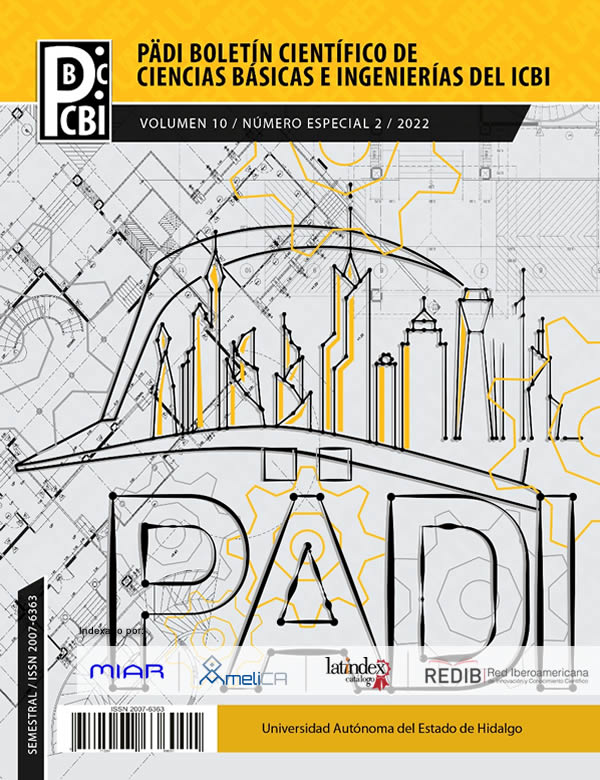Comparative of climate analysis for design strategies using simulators and Givoni's psychrometric chart
Abstract
When starting the climatic analysis of the city of Saltillo, Coahuila using the cove.tool and Climate Consultant simulators, it was found that the climatic file of the place was not available, so it was necessary to use the meteorological data of Laredo, Texas. That is why a Givoni psychrometric diagram was made manually, with data from the place to corroborate the information that these programs provided.
It was observed that, by using meteorological data different from those of the place, the design strategies vary, so there is a risk of generating non-viable bioclimatic design proposals.
Downloads
References
Palette. (2021). A database of sustainable design principles, strategies, tools and resources at your fingertips. http://2030palette.org/
Aguirre, M. (2022). What is a weather file and which ones do we reference. http://help.covetool.com/en/articles/2495609-weather-file
ASHRAE. (2019). Standard 90.1-2019 Energy Standard for Buildings Except Low-Rise Residential Buildings.
Climate Consultant 6.0. (2021). software computadora. UCLA.
Cove.tool. (2021). Cove.tool. https://www.cove.tools/
Del Toro. (2018). Los diagramas bioclimáticos. https://blog.deltoroantunez.com/2018/12/los-diagramas-bioclimaticos.html
EnergyPlus. (2022). EnergyPlus weather. https://energyplus.net/weather
Fuentes, V. (2009). Modelo de Análisis climático y definición de estrategias de diseño bioclimático para diferentes regiones de la República Mexicana [tesis para optar por el grado de Doctor]. UAM. https://core.ac.uk/download/pdf/128736412.pdf
García, E.-CONABIO. (1998). Climas. http://geoportal.conabio.gob.mx/descargas/mapas/imagen/96/clima1mgw
IDEAM. (2019). Glosario Meteorológico. Instituto de Hidrología Meteorología y y Estudio Ambientales. http://www.ideam.gov.co/documents/11769/72085840/Anexo+10.+Glosario+meteorol%C3%B3gico.pdf/6a90e554-6607-43cf-8845-9eb34eb0af8e
INEGI. (2000). Diccionario de datos climáticos (vectorial). Instituto Nacional de Estadística y Geografía. http://internet.contenidos.inegi.org.mx/contenidos/productos/prod_serv/contenidos/espanol/bvinegi/productos/historicos/2104/702825223885/702825223885_2.pdf
Kottek, M. G. (2006). World Map of the Köppen-Geiger climate classification. Meteorologische Zeitschrift, 259-263. https://www.researchgate.net/publication/51997463_World_Map_of_the_Koppen-Geiger_Climate_Classification_Updated
Mendes, A., Torres, P., Aguiar, L., & Pereira, C. (2019). CENIE. Centro Internacional sobre el Envejecimiento: https://cenie.eu/es/blogs/conterma/analisis-de-confort-termico-en-estructuras-residenciales-para-personas-mayores-en
Meteonorm. (2022). Meteonorm. https://meteonorm.com/en/
Morales, J. (2019). Proyecto arquitectónico de máxima eficiencia energética. FA. UNAM. http://www.librosoa.unam.mx/bitstream/handle/123456789/2995/maxima_eficiencia_energetica.pdf?sequence=3&isAllowed=y
OMM. (2007). Función de las normales climatológicas en un clima cambiante. https://library.wmo.int/doc_num.php?explnum_id=4549
Soler&Palau. (2018). Humedad relativa, específica y absoluta: https://www.solerpalau.com/es-es/blog/humedad-relativa-especifica-absoluta/
Stouhi, D. (2019). Cómo diseñar para un óptimo confort térmico (y por qué es importante). ArchDaily México. https://www.archdaily.mx/mx/910532/como-disenar-para-un-optimo-confort-termico-y-por-que-es-importante














